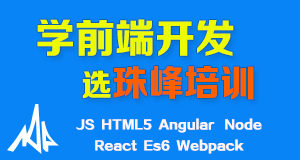《献给你,我深爱的ECMAScript》之String篇
本文主要说说ECMAScript6中新引入的String的api
第一个:startsWith
从语义化上不难知道:是判定某个指定的字符串是否从某个子字符开始的。
语法:
var startsWith = str.startsWith(searchString [,position]);
示例:
var str = "zhangyaochun for w3cplus";
str.startsWith("zhang"); //true
str.startsWith("Zhang"); //false
评语:
其实现在流行的很多类库也有类似这样的api,我们来看看如果封装的?
//kissy 1.3
function startsWith(str,prefix){
return str.lastIndexOf(prefix,0) === 0;
}
//prototype 1.7
//http://api.prototypejs.org/language/String/prototype/startsWith/
function startsWith(pattern,position){
//严谨的参数控制
position = Object.isNumber(position) ? position : 0;
return this.lastIndexOf(pattern,position) === position;
}
第二个:endsWith
从语义化上也不难知道:是判定某个指定的字符串是否从某个子字符结束的
语法:
var endsWith = str.endsWith(searchString [,position]);
示例:
var str = "zhangyaochun for w3cplus";
str.endsWith("w3cplus"); //true
str.endsWith("W3cplus"); //false
评语:
其实现在流行的很多类库也有类似这样的api,我们来看看如果封装的?
//prototype 1.7
//http://api.prototypejs.org/language/String/prototype/endsWith/
function endsWith(pattern){
var d = this.length - pattern.length;
return d >= 0 && this.indexOf(pattern,d) === d;
}
//kissy 1.3
function endsWith(str,suffix){
//会判定字串与指定的字符串的长度对比
var ind = str.length - suffix.length;
return ind >= 0 && str.indexOf(suffix,ind) == ind;
}
两个方案基本一样,只是我更喜欢严谨的 ===
第三个:contains
从语义化上也不难知道:是判定某个指定的字符串是否含有另一个子字符串
语法:
var contained = str.contains(searchString [,position]);
示例:
var str = "zhangyaochun for w3cplus";
str.contains("w3cplus"); //true
str.contains("zhangyaochun"); //true
str.contains("you"); //false
评语:
其实现在流行的很多类库也有类似这样的api,我们来看看如果封装的?
//prototype 1.7
//http://api.prototypejs.org/language/String/prototype/include/
function include(pattern){
this.indexOf(pattern) > -1;
}
第四个:repeat
从语义化上也不能知道:是判定某个指定的字符串是否含有另一个子字符串
语法:
var newString = str.repeat(count);
示例:
var str = "zhangyaochun for w3cplus"; str.repeat(2); //"zhangyaochun for w3cpluszhangyaochun for w3cplus"
评语:
其实现在流行的很多类库也有类似这样的api,我们来看看如果封装的?
//prototype 1.7
//http://api.prototypejs.org/language/String/prototype/times/
function times(count){
//有一层判定
return count < 1 ? '' : new Array(count +1).join(this);
}
如需转载,烦请注明出处:http://www.w3cplus.com/js/ecmascript-lesson-5.html






